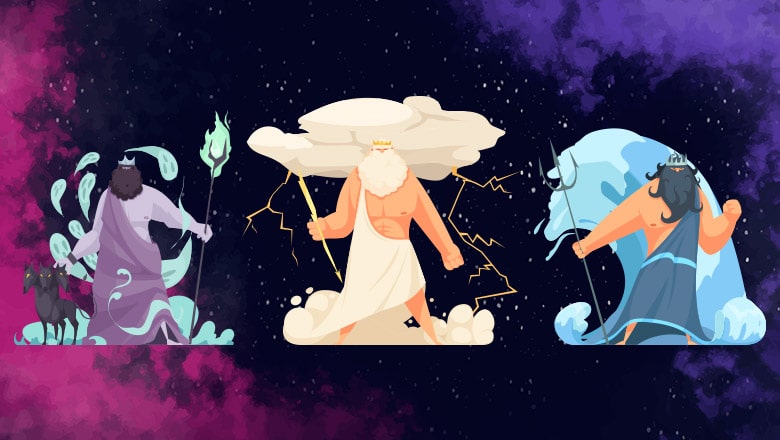

Although she is often depicted as reserved and calm, she repeatedly sought revenge for Zeus’ many affairs with mortal and immortal women, punishing them and their offspring.

She is the goddess of marriage, childbirth and fertility. In this gold hat jewel, made in the 16th century, she is shown at the Judgement of Paris (read more on that here and here) accompanied by a blue peacock. Her symbols are the peacock, the cuckoo and the cow – animals she considered sacred – and her chariot is pulled by peacocks instead of horses. Hera – or Juno in Roman religion – is the wife and sister of Zeus, and is queen of the gods. Hera or Juno Gold hat jewel showing the Judgement of Paris in relief. When Zeus grew up, he forced Cronos to throw up his brothers and sisters, waged war on his father, and won. When Zeus was born, his mother Rhea hid him in a cave on the island of Crete, and instead fed Cronos a stone wrapped in swaddling clothes. According to Greek mythology, Zeus’ father Cronos learnt that one of his children was fated to dethrone him as leader of the gods, so ate each one as soon as they were born. Zeus’ parents were the Titans, Cronos and Rhea, and he is the youngest brother of Hestia, Demeter, Hera, Hades, and Poseidon (who are also gods in the pantheon). You can recognise Zeus by his symbols – the thunderbolt, the eagle and the oak tree – and as a sky god he is often shown among clouds or sitting on top of Mount Olympus. King of the gods is Zeus – or his Roman equivalent, Jupiter – who rules over Mount Olympus and is the god of thunder and lightning, as well as law and order.
#GREEK GODS AND GODDESSES SERIES#
Zeus or Jupiter Rafaello Guidi (fl.1585–1615), ‘Jupiter’ from the series ‘Gods in niches’. Made in Attica (Greece), 460–450 BC.īut how can you tell Ares from Apollo? Do you know the difference between Athena, Artemis and Aphrodite? 1.

The Niobid Painter (fl.460–450 BC), red-figured calyx-krater showing the gods at the creation of Pandora, with a chorus of women. According to Thucydides’ History of the Peloponnesian War, the ruler Pisistratus established an altar of the 12 gods in Athens around 522 BC. In the Homeric Hymn to Hermes, from around 500 BC, Hermes stands at Olympia on the bank of the river Alpheius and divides a sacrifice into 12 portions for the gods. There is evidence for Greek religious practice involving 12 gods from the late 6th century BC. The Titans rebelled against their father Ouranos, overthrew him, and Cronos became the ruler of the gods until Zeus deposed him to rule over the Olympic gods – more on that shortly.
/GettyImages-769720235-5baa16bac9e77c00258cfcad.jpg)
Together, Gaia and Ouranos had 12 children – known as the Titans – including Cronos and Rhea, Zeus’ parents. She then gave birth to Ouranos (the Sky) and other primordial deities like Pontos (the Sea) and Ourea (the Mountains). You may also know this group as the ‘Twelve Olympians’.Īccording to Greek mythology, the world began when Gaia (the Earth) emerged from Chaos – an empty nothingness. Although any polytheistic religion (religion with multiple deities) can have a pantheon – and they existed in Norse, Aztec and Sumerian cultures to name a few – we’re taking a look at the classical pantheon, and the 12 major deities included in it. Derived from the Greek words ‘πᾶν’ pan – all, and ‘θεός’ theos – god, pantheon literally means ‘of all gods’.


 0 kommentar(er)
0 kommentar(er)
